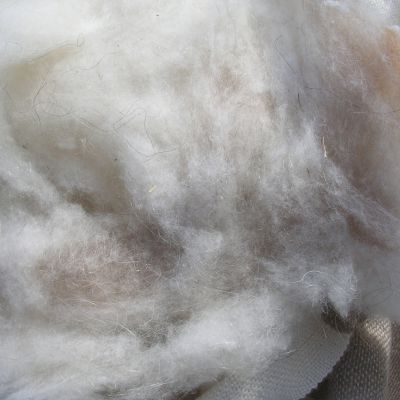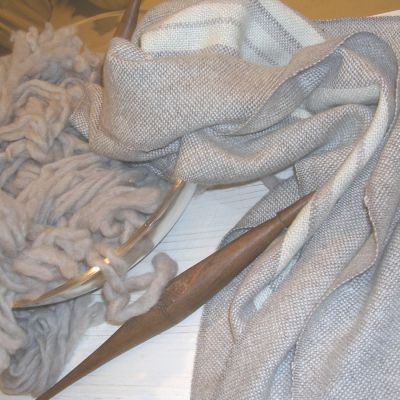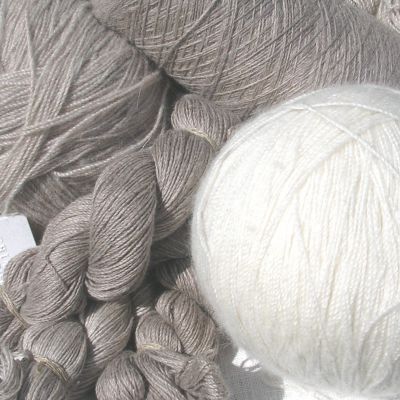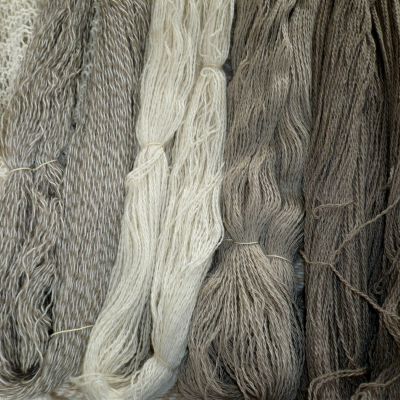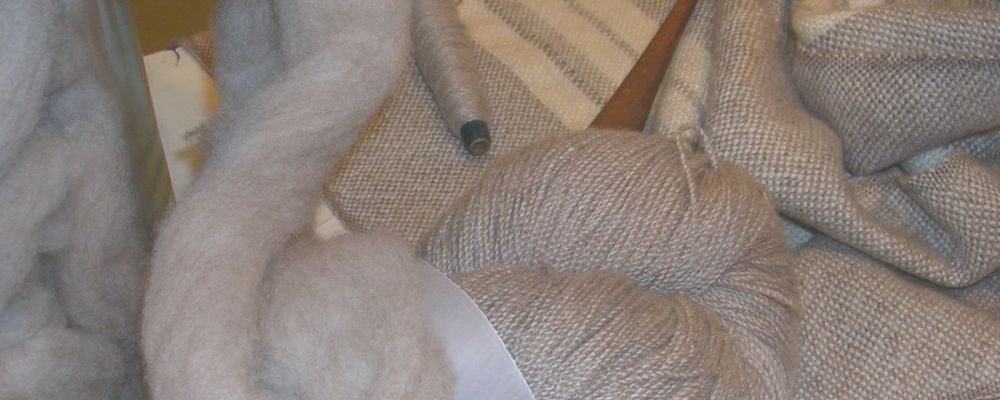
Cashmere is the fine, fluffy, downy undercoat produced by a Cashmere goat; and by definition, is a wavy, opaque fiber of a thickness of 11-18 microns and is 10 times lighter and warmer than wool (Merinos, the best quality sheep's wool for example, is usually over 24 microns thick, although in recent years these values have been greatly improved by genetic selection to under 19,5 in some herds). It, like the 'guard' hair which surrounds and protects it, may be any color, from pure white to near-black, with all the beautiful, natural shades in between. Because it can be dyed pastel colors, the cashmere industry pays more for white Cashmere, but on our farm we select for the multitude of natural colors - cream, hazelnut, brown, grey, charcoal - to be used undyed in our hand-woven products. Whether the goat has long or short "guard hair" is irrelevant: the importance is the quality and quantity of the undercoat it is bred o produce.
The quality and quantity of the fiber produced by any given animal and passed on to its offspring are more important than an animal's "pedigree", so it is important to test and select on an on-going basis to improve both the fineness and the yield. By applying systematic, careful, and continuous genetic selection together with state-of-the art fiber testing and reproductive techniques, improved producers can be bred in only a few generations.
The fiber is harvested once a year by hand in the spring as it sheds; ideally, a good Cashmere goat will produce 200 grams or more of long, highly crimped (wavy), non-lustrous fiber. Once harvested the cashmere is dehaired mechanically or manually to separate the fiber from the coarse guard hair before being spun into yarn.
We buy back each year's crop of raw fiber, either paying cash or transfoming the raw product into yarn, scarf, shawl, etc. to sell back to you. Take a look at our page SUSTAINABLE CASHMERE to learn more about our exclusive product!

